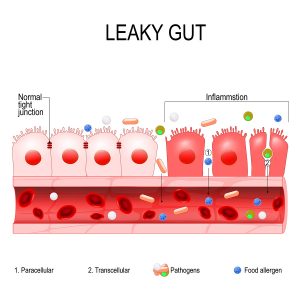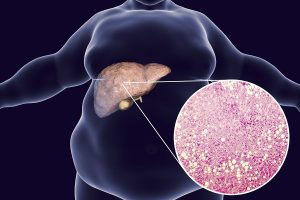Many authors wrote books about food; the quality of food is important. Recently I came across a book review regarding the book “The Way We Eat Now” by Bee Wilson. In the March 2020 edition of the health magazine “LifeExtension” Laurie Mathena interviewed Bee Wilson about her book.
Bee Wilson explained that there is a distinct history about the production of food throughout the centuries. She described 5 phases.
- During the hunter/gatherer time people were eating a low-fat diet with berries, wild greens and wild animals.
- Stage two began around 20,000 BC. It was the agricultural age with a switch to cereals. At that time the population experienced rapid growth.
More stages
- Only a couple of centuries ago, agriculture made progress with crop rotation and by adding fertilizers. This led to a more varied diet. People ate more vegetables, less starchy food and animal protein.
- After the Second World War there was a major food transition. Processed food was introduced. People started eating more fat, meat, sugar and a lot less fiber. We are now experiencing a phenomenon that we are simultaneously overfed, but undernourished. We get too many calories, but our diet is poor in nutrients. This type of diet causes obesity and degenerative type illnesses.
- Stage 5 involves people abandoning junk food and eating more vegetables and fruit again. The more knowledgeable people are about the link between a good diet and health, the healthier people eat. This stage requires governments and other organizations to do their part in assisting people to make that food transition.
Food labeling changes in Chile
Here is one example of how governments can make a difference. This happened in Chile. Chile used to have the highest consumption of sugary beverages in the world. Prior to 2016 the average consumer in Chile bought more than 50% of the food as ultra-processed. This resulted in Chile having the second highest obesity rate after Mexico. The government of Chile decided in 2014 to introduce very simple labels for every food item. The government of Chile demanded that all the foods with too much sugar, high saturated fat, food high in salt and high in calories had proper labels. These labels are simple, hexagonal warning labels.
Warning labels
For instance, if a food product had too much salt in it, it would say in the hexagonal label: “Warning: high in salt”. As the labels had the effect of lowering sales, the food companies reformulated their products very quickly to stay under the threshold triggering the food warning. In 2016 Chile also decided to tax unhealthy foods higher. The government taxed sugar-sweetened colas with an 18% extra tax. Schools had to abandon junk foods sales.
Quality of food
When you start cutting out junk food and other processed foods, the quality of your food intake is improving. Eat more vegetables, and fruit. Eat wild salmon, which provides omega-3 fatty acids. Do not consume vegetable oils like soybean oil, canola oil, safflower oil, corn oil and grape-seed oil. They all contain omega-6 fatty acids. Omega-6 fatty acids are essential fatty acids and they convert mainly into energy. But the problem is that our western diet contains too many omega-6 fatty acids. Omega-6 fatty acids can convert into arachidonic acid, which causes inflammation. This in turn can cause heart attacks and strokes on the one hand and arthritis on the other hand.
The omega-6 to omega-3 ratio is important
In the past a healthy ratio between omega-6 and omega-3 was 4:1 or less. The average American now eats food with 16-times the amount of omega-6 fatty acids than omega-3’s. This is an omega-6 to omega-3 ratio of 16:1. No wonder people get sick with degenerative diseases.
Brain health maintained by eating enough omega-3 fatty acids
Here is a study that looked at brain structure using MRI scans. 3660 participants aged 65 received MRI brain scans. The researchers recorded their food intake with questionnaires. They rescanned 2313 of these individuals 5 years later. The group highest in omega-3 consumption was compared to the group with the lowest omega-3 consumption. Blood tests were also done both initially and 5 years later to verify the omega-3 intake. The researchers found that the higher omega-3 group had less subclinical infarcts and the white matter of the brain was of a better grade. They concluded that fish consumption, the major source of omega-3 fatty acids, had a beneficial effect on brain health later in life, preventing Alzheimer’s disease.
Cook your own food, do not eat out frequently
When you cook your own food, you can choose the right foods as you shop. Stay away from the “dirty dozen”, which is poisoned with insecticides, herbicides or pesticides. Instead you can buy organic foods that have not been sprayed with toxic substances. When you eat out, you have no choice about what you eat. Food in restaurants also contains food preservatives that are not labeled in North America, but that would be labeled in restaurant menus in Europe. In addition, food in restaurants often contains too much salt, too much sugar and the wrong oils. Omega-6 fatty acids are much cheaper than olive oil, and as a result this is what the chef uses.
Transition from stage 4 to stage 5
When you want to transition from stage 4 to stage 5 regarding your food composition you are swimming against the stream of establishment. At this point you are more or less alone when you want to abandon French fries, processed food bars, hamburgers and sugary soft drinks. But the more you eat at home, the more you take out your lunch box with food prepared at home, the more you are winning the war against convenience foods. It is what you put into your mouth, which is the fuel for your body. Don’t compromise regarding the quality of your food!
Conclusion
The quality of food is important. We have been inundated by ads from the food industry that we should eat fast foods (hamburgers, French fries), processed foods like power bars and drink sugary drinks. We have met the entire lineup on television! But it is best to buy basic foods and prepare all your food from scratch. Be careful that you avoid the “dirty dozen” foods. If you want to eat these, buy the organic food versions. This way you avoid pesticides and other poisons. Stick to extra virgin olive oil as a fat source and avoid vegetable oils. Soybean oil, canola oil, safflower oil, corn oil and grape-seed oil contain a lot of omega-6 fatty oils.
Inflammation caused by vegetable oils
These cause inflammation in your blood vessels and joints. The end result are heart attacks, strokes and arthritis. I also eat a lot of wild salmon and other seafoods, a great source of omega-3 fatty acids. In addition, I take two capsules of molecularly distilled fish oil in the morning and at night. Eat more vegetables and fruit. You are now paying attention to the fact that the quality of food is important.
Here is a link to the book by Bee Wilson; “The Way We Eat Now”.















